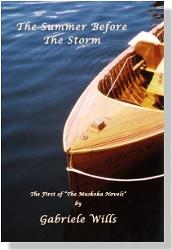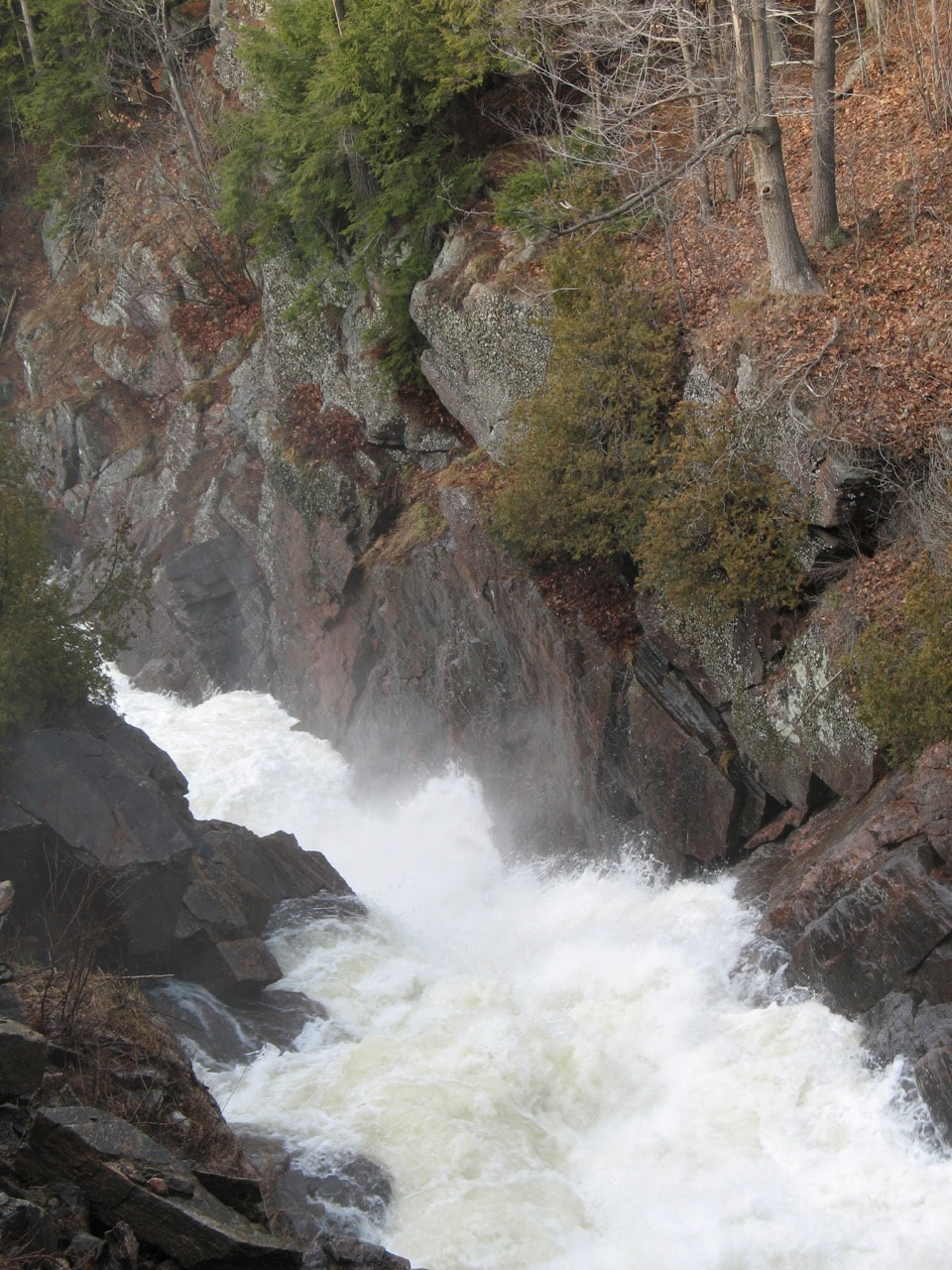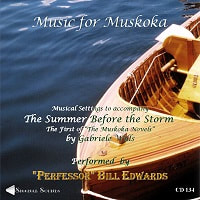Music For Muskoka:
|
|
The Novel
The Significance of the Music to the Novel
by Gabriele Wills Music adds a dynamic new dimension to the enjoyment of this novel. Authentically rendered performances of the music transport the reader into the Edwardian and World War 1 eras.
Appropriate lyrics of popular songs of the time are used for dramatic effect, and in character and relationship development. So the reader can enjoy the music to which characters dance and flirt - songs that evoke romance as well as themes in the storyline. During my research, I came across Bill Edwards' website, and became enchanted by his masterful renditions of the popular music of the era. It helped me to immerse myself in the appropriate mindset for writing about that time. I was thrilled with this collaboration, which allows me and readers to delight in this evocative music, and be instantly whisked away to this momentous time in world history! Click here for more info about the novel. The SoundtrackAnnotated by Bill Edwards:
# 1 - By the Beautiful Sea: Harry Carroll (Music) and Harold R. Atteridge (Lyrics) -1914: No other song about the joys of summer and the seashore has endured as long or as well as this one. In fact, Carroll wrote while sitting on a long hotel porch on Coney Island one pleasant summer afternoon. This piece was a million seller quite early on. A true sign of a successful tune, it was occasionally interpolated into stage musicals, including some versions of "No No, Nannette" and "The Boy Friend". # 2 - By the Light of the Silvery Moon: Gus Edwards (M) and Edward Madden (L) -1909 - 1907: For some reason, moon songs became popular around this time, with this one leading the pack. Actually, any opportunity to use that titillating rhyming word "spoon" (a provocative term at that time) was readily embraced. In Vaudeville, this quickly became a great soft shoe number (essentially shuffling on a sandy stage). # 3 - Aviation Rag: Al Marzian (as Mark Janza)- 1910: Musically this rag is very descriptive in relation to its title. There are elements in here that were later used in the "Aviation Suite" by arranger/composer Ferde Grofé in the 1920s. The introduction could well be a propeller spinning in preparation for take-off. It is the trio that could be described as a rough landing or a crash followed by settling dust. It is truly a journey of the period that represents the pioneering days of air travel. # 4 - Let Me Call You Sweetheart: Leo Friedman (M) and Beth Slater Whitson (L)-1911: Nobody can argue about this tune's popularity, which has been constant since it was first published. After a bad deal the composers made on "Meet MeTonight in Dreamland", the team followed it up with this song a year later. Will Rossiter's brother Harold started his own publishing firm and bought this song, rewarding the writers with much-deserved royalties. Sweetheart ultimately sold over six million copies. # 5 - Oh! You Beautiful Doll: Nat D. Ayer (M) and Seymour Brown (L) - 1911: It is the verse that is most musically interesting in this piece. It is notable that the verse is actually comprised of the classic 12 bar blues pattern, and it was introduced more than a year before either "Memphis Blues" or "Baby Seals Blues". Since the 1920s this elegant song has been performed with a swing rhythm, however it was originally written in a straight syncopated style as presented here. # 6 - Come, Josephine in My Flying Machine (Up She Goes!): Fred Fisher (M) and Alfred Bryan (L) - 1910: Flight was still quite a novelty in 1910, not for the faint of heart, and not even yet considered for war. This piece capitalized on the romance of flight more than anything, using a clever rhyming name for the femme fatale and the contraption fatal. It was a big hit overall. # 7 - I Wonder Who's Kissing Her Now: Joseph E. Howard (M), Will M. Hough and Frank R. Adams (M) - 1908: Not to be taken too seriously, this poignant song about the hazards of infidelity and pining for a former partner was part of a musical comedy of the era called "The Prince of Tonight". The main character is a typical egotistical male who has many lessons to learn, and one of them is contained in this beautiful comic song. Howard was also known for such gems as "Hello Ma Baby". # 8 - Row, Row, Row: James V. Monaco (M) and William Jerome (L) - 1912: This song was interpolated into the 5th edition of the Ziegfeld Follies. There is certainly a lot of room for a scintillating interpretation of the lyrics, which are actually more naughty than nautical in nature. Regardless of the double meanings, it has been a favorite of old-time pianists since its debut. Listen carefully for a couple of other "watery"quotes interspersed throughout. |
The Tunes
The Companion CD
by Bill Edwards Ragtime historian and performer, "Perfessor" Bill Edwards has consistently placed in the top five of the World Championship of Old-Time PianoPlaying, and won the title in 1991. In 2016, he was honoured with the highest possible recognition in the field of ragtime from the Scott Joplin International Ragtime Foundation with their award "For Outstanding Achievement in Research, Performance and Advancement of Ragtime."
Bill Edwards' CommentsThis album is a kind of first for me, and perhaps for the melding of music and literature. It was suggested to me by Canadian author Gabriele Wills as she was working on her historical novel. Using me as a reference for appropriate music for the 1914 time period the novel starts in, the idea was proffered that"wouldn't it be nice if we could have a CD to accompany the music referenced in the novel?"
So here it is. The original covers and biographies of some of the composers can also be found on my website. But overall, I am hoping that when you read the novel you also pop the CD in on occasion and take a trip back in time to the Muskoka Lakes as the world was just starting to feel the stirrings of The Great War. Musically Yours, Bill Edwards Of Special Note: Tune # 11: Muskoka Falls - Indian Idyll: Joseph F. Lamb/ Bill Edwards -1902/2006: The successful publication of "Hiawatha" (actually a train song, not an Indian piece) in 1901 was quickly noted by many composers who came up with their own Indian-themed pieces. Before his famed ragtime composition career, Joseph Lamb was working and attending school in Kitchener, Ontario and staying at Walper House, so may well have ventured to the Muskoka area, which could have provided some inspiration. This was provided to me by my friends Pat Lamb Conn (his daughter) and Canadian music researcher Ted Tjaden, but the piece was not completed. At Pat's behest, I added a trio and an interlude. Here is the debut of this now complete work. To order "Music for Muskoka" from Bill, click here Soundtrack Continues:
# 9 - Moonlight Bay: Percy Wenrich and Edward Madden - 1912: Long a favorite of vocal quartets, the chorus of this placid song is well known by all fans of old-time music. It is referring to a memory, as the beautiful verses tell about pining for a love now long lost. It most certainly would have brought memories of any similar location, including the Muskoka Lakes, so its appeal was universal. The quote at the end of this arrangement is from"Love's Old Sweet Song", referenced in the lyrics. #10 - If You Were the Only Girl in the World: Nat D. Ayer (M) and Clifford Grey (L) -1916: One of the more musically and structurally advanced love ballads of the ragtime era, this represents some of Ayer's finest work. It was a hit many times over, having been recorded frequently from its debut through the 1970s. # 12 - Alexander's Ragtime Band: Irving Berlin- 1911: This is undoubtedly one of the most popular songs of the Ragtime era, and the one that made Berlin famous. Based largely on a bugle call and the Stephen Foster chestnut "Old Folks At Home" (S'wanee River), it contains virtually nothing of Ragtime except for the word. Nonetheless, it is evocative of popular songs of the time, and was even played on the Titanic's fateful voyage. #13 - Meet Me Tonight in Dreamland: Leo Friedman (M) and Beth Slater Whitson (L)- 1909: This charming waltz is actually the parent of "Let Me Call You Sweetheart", written the following year. When Friedman and Whitson put this song out in Chicago, it quickly caught on, and soon caught the attention of Will Rossiter, possibly Chicago's largest publisher at that time. Rossiter bought the song outright, put popular Chicago singer Reine Davies on the cover, and realized sales of over two million copies in short order. But the composers saw nothing more than the direct proceeds of their sale to Rossiter. # 14 - Keep the Home Fires Burning: Ivor Novello (M) and Lena Ford (L) -1914: This song quickly became popular in the composers' native England, and made Novello, who would later fight in the war and survive two crash landings, famous overnight. It also caught on in the US and Canada once they became involved in the conflict, and it still rings true today in its sentiment that the soldiers will always need a home front to go to and feel their support from. # 15 - If I Had You: Irving Berlin - 1914: Long before his finest ballads "Always" and "What'll I Do?", the versatile Berlin was getting into the genre successfully, intermixing ballads such as this with his latest dance tunes, comic songs and ragtime numbers. Note that Irving rarely wrote anything instrumental, preferring to skillfully combine words and music into one overall emotional collective. # 16 - It's A Long, Long Way to Tipperary: Harry Williams (M) and Jack Judge (L) -1912: Another British export, this was originally a ballad about Ireland - "It's A Long Way to Connemara" - in 1909, but it never took off. In order to win a bet in 1912 that he could have a new song in 24 hours, Jack changed the destination toTipperary and the overall feel to a persistent march. Harry was indignant about the unilateral change, but as it became a big wartime hit he got over it. A music hall song, it instantly became a marching-to-war anthem in 1914 through repetition and happenstance, not such along way to go. # 17 - Melancholy (My Melancholy Baby): Ernie Burnett (M) and George Norton (L) -1912: This was Burnett's only hit, but it has appeared perpetually in recordings and movies almost since it was published. Starting out as more of a slow march song with a light swing, it is fortuitous that musicians soon exploited its ballad potential, part of its charm and endurance. The original title was quickly changed to the more famous phrase due to public references of the song by that name. # 18 - Give My Regards to Broadway: George M. Cohan - 1904: Think about the significance of New York in the global economy, not just now but as far back as 300 years and certainly in 1900. It was the gravitational center of stage entertainment, music publishing, sound recording and general port of entry for the U.S. representing the glitz and glamour of the new century. Cohan's point was that the mention of Broadway and 42nd street in many parts of the world was significant enough to garner attention, and made those Americans who were abroad wistful for home. |


